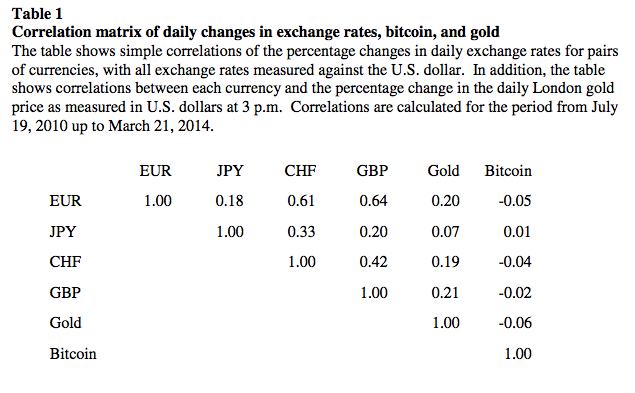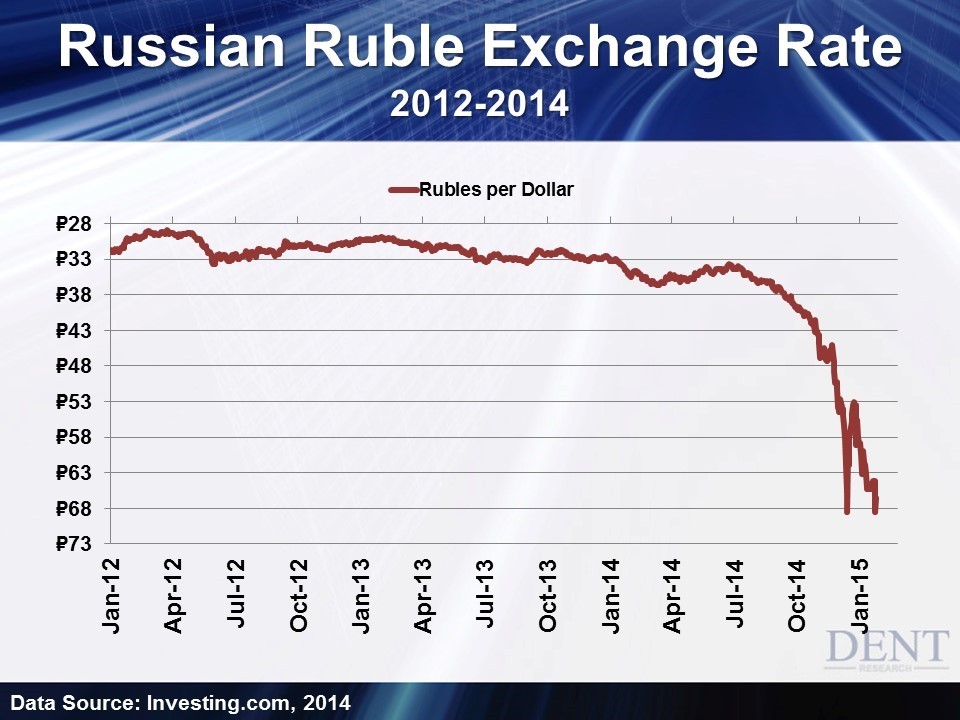Currency Exchange Rates and Your Investments What You Don t Know Can Hurt You
Post on: 16 Июль, 2015 No Comment

display>
Shah Gilani
You may be facing immense foreign-currency risks in your investment portfolio and not even realize it.
If that’s the case, don’t feel bad: You’re not alone.
The reality is that most American investors have no idea that currency exchange rates directly affect U.S. corporate earnings. this country’s stock market. or the growth rate of our economy.
The bottom line: These investors don’t realize that they face some pretty major foreign-exchange-rate exposure in their investment portfolios as well as with the individual stocks contained in those portfolios.
This exchange-rate exposure can be accompanied by some pretty major risks. Understanding how currency fluctuations can enhance or destroy corporate earnings, the export sector and the U.S. economy, and even your personal wealth will make you a smarter, better investor.
Forex Basics
Understanding how currency fluctuations can enhance or destroy corporate earnings, industries, and your personal wealth, will make you a smarter, better investor. It will help you better manage risk. As a result, you will be able to boost your profits, even as you sidestep losses.
Most investors think that the foreign exchange market also known as the forex, or FX market is where central banks buy and sell their country’s currency when executing macro-economic policies. That’s true, but it doesn’t happen all that often.
What does happen, 24-hours a day, each and every weekday (the FX markets are closed on the weekends), is that corporations and banks trade currencies on a continuous basis. Hedge funds and wealthy investors speculate in the forex market. And, as of the mid 1990s, day traders and individual investors have access to FX-trading platforms that were once off limits to any investor not able to trade in million-dollar increments.
In fact, the FX market is by far the largest, most-liquid trading venue market on the planet. According to the Bank for International Settlements. approximately $4 trillion worth of foreign currencies are traded every single day.
There is no physical exchange where currencies are traded. They are traded over the counter, or OTC. That means that dealers and traders buy and sell currencies either over the phone, or more often, through electronic-trading platforms where bids and offers can be posted and trades executed between parties.
The other key concept to grasp is that no currency can be traded alone; for a trade to take place, a currency has to have a dance partner from another country. The trade is then executed on one of several ways, including:
- By purchasing one currency and paying for it with another currency.
- Or by selling a currency and receiving payment in another currency.
For example, if you think that the dollar is going to appreciate (get stronger), you have to ask yourself the question: What other currency will the dollar appreciate against?
The dollar only goes up relative to another currency, not relative to itself. So, if you think the U.S. economy is getting stronger and the Eurozone’s economic outlook is weakening you would buy dollars and pay for them with euros.
If you were right, to unwind your trade and take your profit, you buy back the euros you sold and pay for them with the dollars that you bought. If the dollar appreciated as you expected it to, when you unwound the trade you would be buying more euros with your (now-more-valuable) dollar. The difference is your profit.
But here’s the tricky part of this example: Just because the U.S. dollar appreciated in value relative to the European euro, it doesn’t mean that the dollar will have appreciated against the Japanese yen or the British pound. Every currency pair has its own dynamics.
Currencies and Corporations
While currency speculation for profit is a widespread activity, there are other reasons to be in the forex markets. Business transactions also have a huge impact on the FX market. Each day, businesses and investors take huge sums of one currency and convert that into another. Businesses, especially, do so to conduct their operations, make purchases and sales, and to execute investment strategies.
For example, if Toyota Motor Corp. (NYSE ADR: TM ) wants to build a U.S. factory in order to make cars in the market where the vehicles will be sold, it will have to pay for the plant’s construction, and it will have to be able to meet payroll. Both of those activities will require U.S. dollars.
To get dollars, Toyota might sell billions of dollars worth of Japanese yen. By selling yen and buying dollars Toyota could affect the exchange rate between the two currencies, but it would have the dollars it needs to build and run its U.S. factory.
If the company then sold a lot of cars in the U.S. market, it would find itself with a lot of dollars. But to get those dollars back to Japan, where they might want to take them to pay out dividends or pay their Japanese workers, they would have to convert the dollars back into yen. So, Toyota not only has to worry about selling cars at a profitable price, they also have to worry about currency exchanges.
Now, extrapolate that out to every company that buys parts in another country, sells products in yet another country, and manufactures in yet another country, and you can see why the forex market trades $4 trillion a day.
Big investors have huge currency trading needs as well. If a U.S. institutional investor or hedge fund wants to buy British or Swiss equities, or bonds, or wants to buy an Australian mining company, they’re going to have exchange dollars for British pounds, Swiss francs, or Australian dollars to make their purchases. And, so it goes.
As economies across the globe become increasingly interconnected, the relative value of every country’s currency to those of every other country they do any business with impacts profits and losses across the entire spectrum of all good and services.
What’s driving emerging market countries, while the U.S. remains stagnant, is the fact that emerging market economies are built on export-driven businesses. The reason that these economies are growing is because on a relative basis their currencies are much less expensive than the currencies of countries that buy their goods. On a relative basis, that drops the price of the goods that are sold to developed economies, such as the economy of the United States.
There are always spin-off effects. For instance, U.S. consumers like to buy less-expensive products made by overseas companies, which has caused a shift toward overseas suppliers (years ago it was Mexico or Taiwan that made most of our goods; today, it’s China). Add in the fact that the dollar is strong relative to the currencies of the countries we tend to buy from.
The result: There’s been a shift toward overseas manufacturing. That preference, coupled with the perennially strong U.S. dollar, has helped cause our own industrial base to shrink, while emerging markets and other export-driven economies are building competitive industrial bases.
U.S. President Barack Obama has stated, as a matter of policy, that he wants the United States bolster its exports of products and services as a means to lifting us out of our current economic doldrums. That’s easier said than done. Because the dollar is strong relative to most other countries’ currencies, our exports will be expensive when other countries have to buy dollars with their less-valuable currencies to pay for what we hope to sell internationally.
Where We Go From Here
In order to see the big picture, investors have to focus on exchange rates to see where growth is likely to come from, or where it might be choked off.
Most key countries plan on exporting their way to growth. That means there are bound to be currency wars. Driving down your currency is the fastest way to make your exports cheap on international markets.

The United States wants China to re-value its currency higher relative to the dollar. Why? So our goods will be more competitive with those of China’s. That way, we believe, global players will start buying American goods. U.S. Treasury officials have hinted that they consider China a currency manipulator. But they’ve been reticent about directly confronting our giant Asian trading partner.
China, for its part, doesn’t want its currency to appreciate relative to the dollar, the euro, or any other currency for that matter. Beijing wants its export-driven economy to keep generating double-digit growth rates. China’s leaders have plans for spending the huge foreign currency reserves about $2.45 trillion. as of June that the country has amassed.
Just last week, Japan’s Ministry of Finance through the Bank of Japan (BOJ) intervened in the global currency markets by selling $23 billion of Japanese yen and buying U.S. dollars. Why? Because Japan’s currency is expensive, meaning its export sector (and entire economy) is suffering.
Since last week’s intervention, Japan’s stock market has risen more than 4%. That’s because companies are expected to do better if they can export.
The takeaway from all of this is that exchange rates affect businesses, industries, stock markets, economies and global relationships.
Action to Take : There are two points that we repeatedly return to here in Money Morning.
- Now, more than ever, investors must understand that we operate in a global economy. Some of the biggest profit opportunities will come from beyond the U.S. borders.
- And investors who really want to succeed must learn to follow the money to watch for the liquidity flows that can pump up the markets they flow into, while dropping those the waves of capital move out of.
The global currency markets are perhaps the most-clear embodiment of those two points. Investors who wish to truly succeed today must understand at least the basics of the currency markets, since that’s a key to global money flows.
Now that you get the big picture, the next installment of our Currency Matters series will focus on some of the specifics that investors would do well to learn for instance, how currency exchange rates (and your unforeseen exposure to shifting rates) impacts the prices of the stocks and the exchange-traded funds (ETFs ) that you buy and sell.
Who says what you don’t know can’t hurt you?
[Editor’s Note. Shah Gilani, a retired hedge-fund manager and renowned financial-crisis expert, walks the walk. In a recent Money Morning exposé, Gilani warned that high-frequency traders (HFT) were artificially pumping up market-volume numbers, meaning stocks were extremely susceptible to a downdraft.
When that downdraft came, Gilani was ready — and so were subscribers to his new advisory service: The Capital Wave Forecast . The next morning, because of that market move, investors were up 186% on a short-term euro play, and more than 300% on a call-option play on the VIX volatility index.
Gilani shows investors the monster capital waves now forming, will demonstrate how to profit from every one, and will make sure to highlight the market pitfalls that all too often sweep investors away.
Take a moment to check out Gilani’s capital-wave-investing strategy — and the profit opportunities that he’s watching as a result. And take a look at some of his most-recent essays, which are available free of charge. To read one of his most-popular essays, please click here .]
News and Related Story Links :
Official Website
Official Website
List of countries by foreign exchange reserves
Covered Bonds: The Solution to America’s Economic Ills














